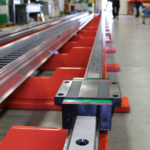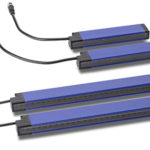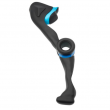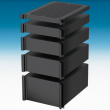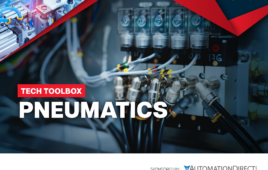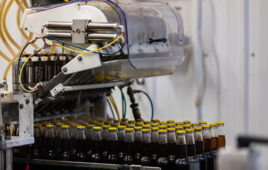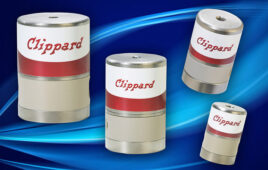The electric motor may be the most common source of mechanical power in modern industrial environments, but that doesn’t make it the best setup for every application. Air motors are simple and won’t overheat if stopped under load … Plus they can be specified to meet motion requirements without necessitating complex controls.
By David Lockett | Managing director at Huco Dynatork
Amid the buzz surrounding the Fourth Industrial Revolution and Industry 4.0, it’s easy to discount the effect of technologies that’ve powered earlier industrial transformations. Factories of the original Industrial Revolution were driven first by water and then by steam. Then they we driven by the Second Revolution and mass production — enabled by electricity (and especially the electric motor) to free industrial engineers from reliance on cumbersome line-shaft installations (and their factory ceilings full of belts) with controllable mechanical power delivered anywhere it was required. Well, almost anywhere.
Though electric motors remain the prime mover of choice in most industries, there are numerous applications for which electric-motor use is difficult, expensive, or even hazardous.
A simpler and safer alternative in many such applications is use of motors powered by compressed air. Air doesn’t ignite flammable atmospheres or contaminate most products. It’s easily distributed through low-cost pipework and in most production environments is already used and readily available. What’s more, air motors are often smaller than comparable electric motors, which is beneficial in compact machinery.
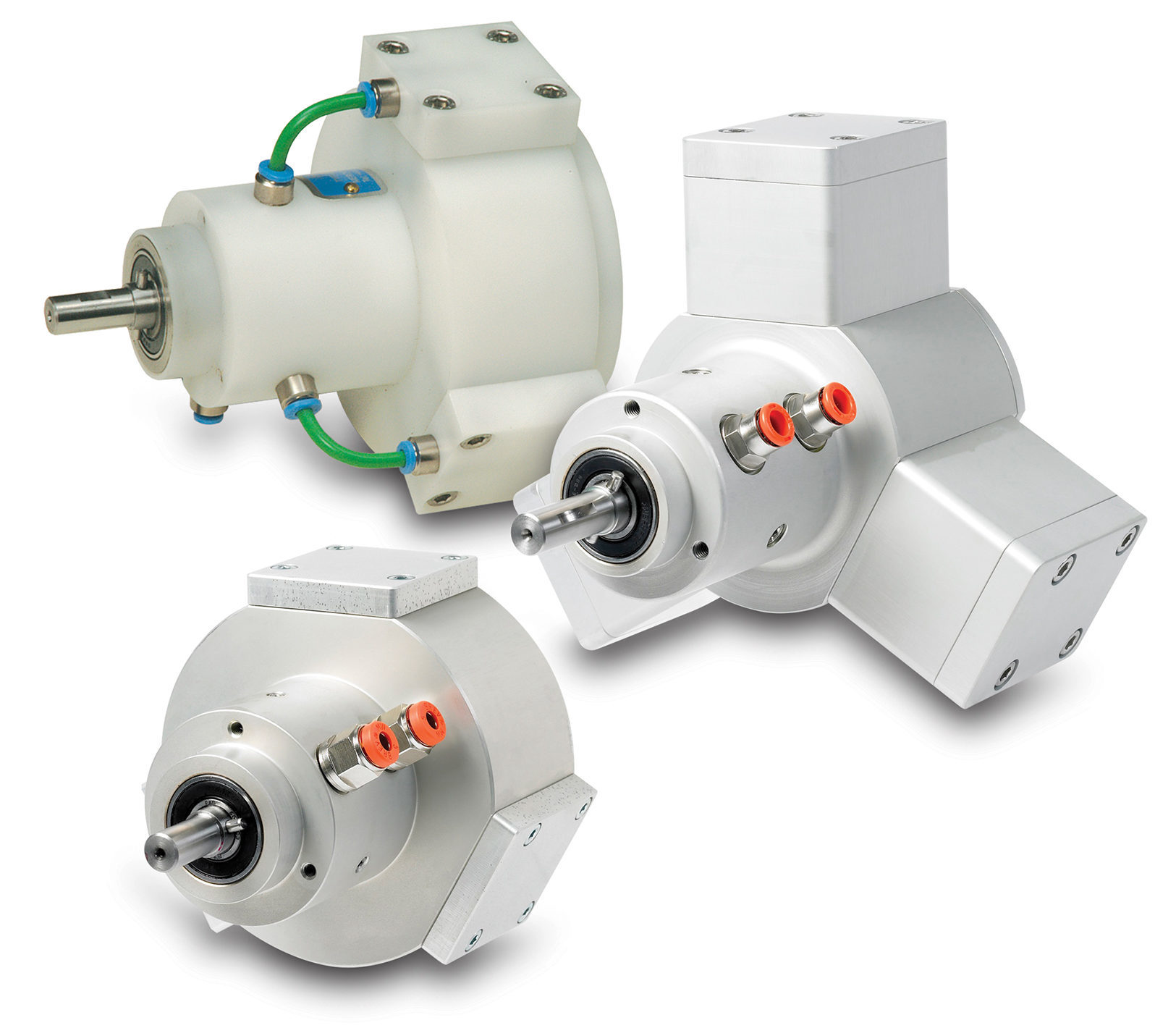
Huco’s Dynatork air motors are quiet and run at speeds from 0 to 800 rpm or more while delivering torque to 15 Nm without gearsets. The motor come in aluminum, stainless steel, and acetal versions. Piston-type air motors from Huco Dynatork are also up to four times more energy efficient than vane-style air motors.
Typical air-motor installations include machines subject to humid or wet conditions that can cause corrosion in electric motors. Air motors also work when submerged .. and excel in harsh washdown environments, as they can withstand high-pressure water and cleaning solvents. Air motors also withstand installation inside vibrating equipment. Still another application is in explosive atmospheres where sparks generated by motors (and their associated switchgear) present unacceptable risk of ignition.
In these applications, industrial engineers must often adopt alternative technologies. For example, in some cases they may install electric motors a safe distance away and then use shafts and mechanical-transmission components to feed power to where it is needed.
A list of the most common air motor applications includes paint mixers and agitators, paint shop automation drives, conveyor drives, winding and unwinding systems, oilfield down-well cable and hose reel tensioning, and back flush filter drives. Food packaging machinery is also a common application where compact air motors can precisely start and stop rolls of printed plastic bags used to package meat, poultry, and cheese. Air motors also run axes in packaging machines that fill precision-metered quantities of sauces into pouches.
Two air motor technologies
Modern air motors are one of two technologies. The first — vane motors — operate like turbines with bladed wheels that spin in the flow of air induced by a pressure gradient between the motor housing’s inlet and outlet. Most vane motors run at high speed and produce low torque, especially when rotating more slowly than their design speed. That makes them most common in applications needing relatively narrow rpm ranges.
Much like a diesel or gas engine, piston air motors use reciprocating pistons to turn a central shaft. They generate maximum torque at startup so improve the performance of applications that necessitate frequent stops and starts — especially under load. In contrast, if a brake holds an ac or dc electric motor, that motor is at risk of quickly burning out. Under such braking, an air motor will simply stop and then seamlessly operate again upon brake release.
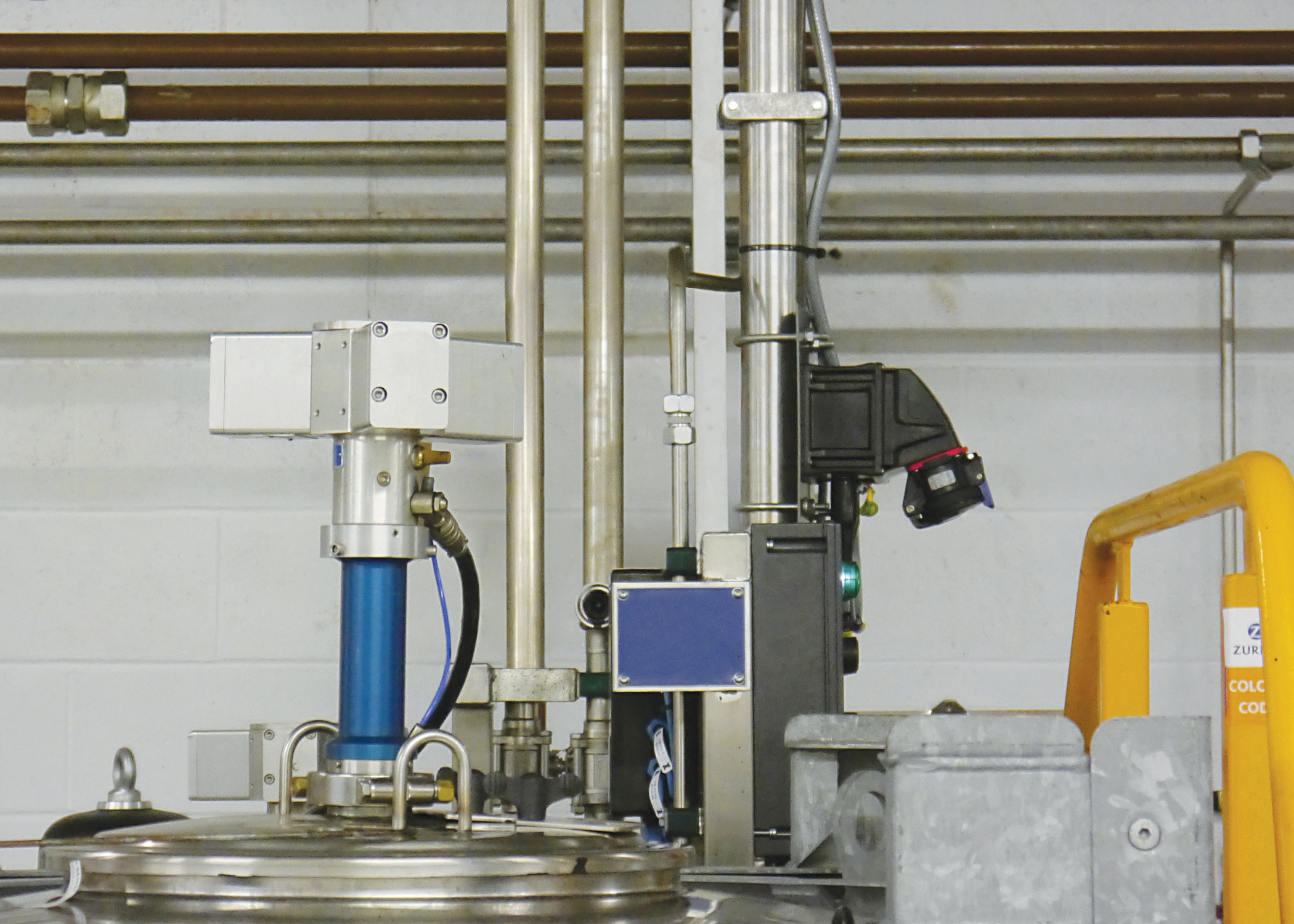
Huco Dynatork piston air motors often install in automotive paint lines. The air motors mount to the tops of paint-drum agitators to maintain constant agitator-blade rpm. That in turn makes for a better surface finish and lower running costs — as well as quieter operation.
Efficiency of air motors (and the two main variations)
Air motors are far less efficient than their electric counterparts. However, where air motors are indispensable, piston air motors offer higher efficiency than vane-type air motors. This is because they exhibit less leakage of air. Ultimately, the overall motor efficiency depends on the integrity of the air supply from the compressor. Piston motors can consume as much as 80% less air than vane designs with similar power output.
Nearly instantaneous stop-start-reverse also allows very accurate control of the rotary position of the shaft, which is suitable for indexing applications or other automation tasks where precision is required.
Air-motor installation considerations
The top requirement for proper air motor operation is a steady supply of compressed air. A reliable compressor is often the optimal source, but the motors can also be run from compressed air cylinders. The air should be filtered through a standard in-line filter, and air pressure is typically between 4 and 6 bar. That said, some models can run with pressures down to 1 bar.
Air motors can operate with or without lubrication in the air. Tip: Applications that rely on cleanliness (such as paint sprayers) always need clean and unlubricated air.
The simplicity of air motors and their air-supply systems (compared to electric-drive equivalents) makes installation and maintenance easy. The motors are also lightweight and compact so it’s possible to lift and maneuver during routine maintenance. Connecting and disconnecting the air supply is straightforward.
Consider how some manufacturers’ air motors deliver speeds of 0 to more than 800 rpm and torque to 15 Nm without gears. Some motors come in aluminum, stainless steel, or acetal … with the latter two options suitable for harsh washdown environments (thanks to their high resistance to caustic acids and chlorinated sanitizers) — and acetal particularly suitable for use in food and beverage processing.
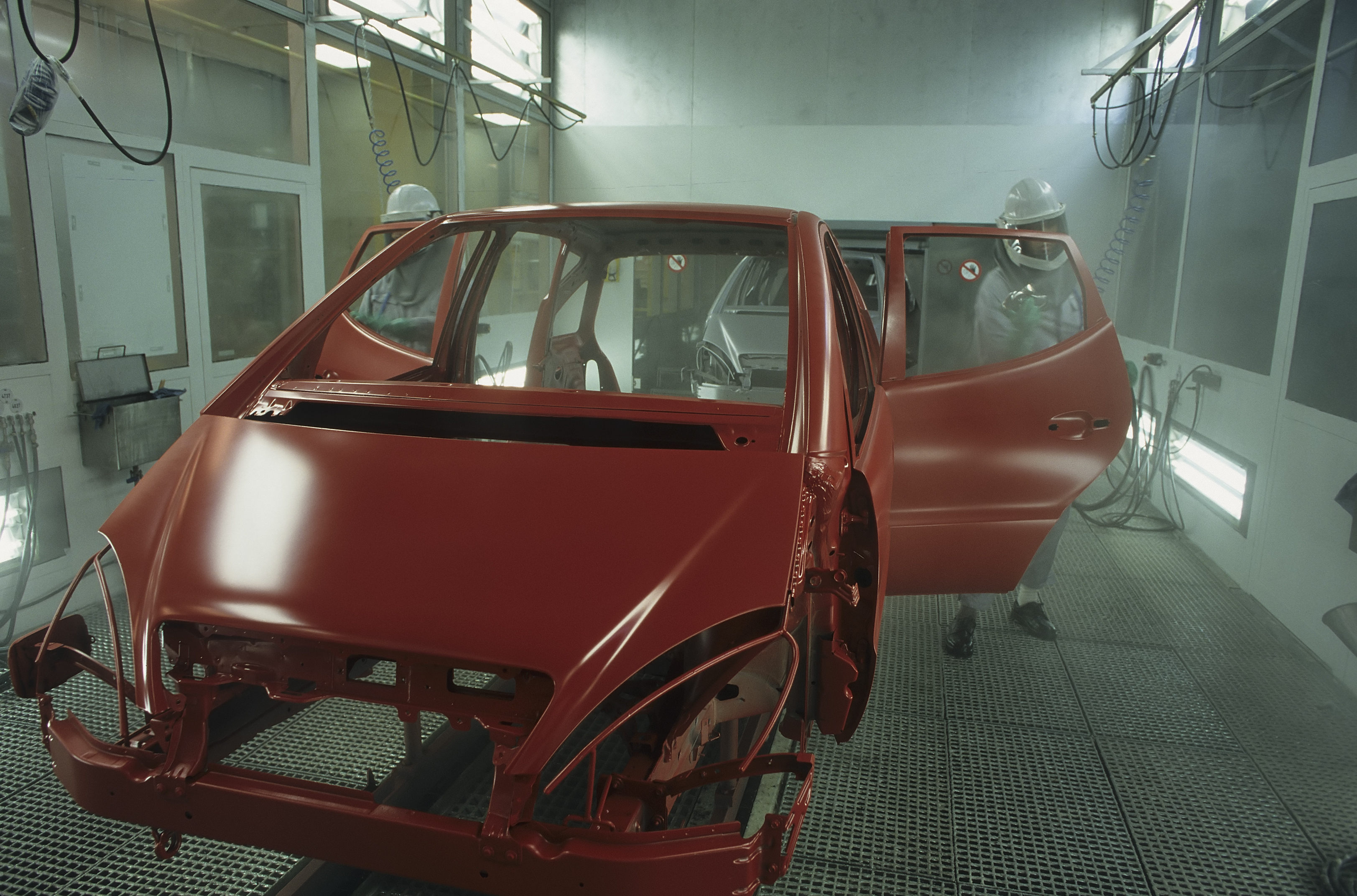
Huco supplies air motors to a major builder of automated paint-booth systems used by a global automotive manufacturer. The motor works on a vertically mounted drive system, where it’s connected through a worm gearbox to drive a carousel that delivers paint-filled containers to a spraying robot. The systems builder uses air motors to get high torque instantly in stop-start-reverse conditions — even at speeds to 800 rpm. The air motors are also suitable here because sparks generated by electric motors would present significant risk of ignition in the potentially explosive paint-booth environment. Photo: iStock
Because air motors don’t directly depend on electricity, they don’t generate electromagnetic fields when running. Special motors produced without magnetic components are used in a number of specialized applications, including MRI scanners, scientific equipment and military applications that must eliminate electromagnetic emissions.
In fact, even as a decades-proven technology, piston air motors satisfy Industry 4.0 automation needs — with high-accuracy controllability (using feedback from either pneumatic or electronic sensors) and so offer connectivity with today’s remote monitoring and controls.
Huco Dynatork | www.huco.com
You may also like:
Filed Under: Pneumatic equipment + components, MANUFACTURING, Gears • gearheads • speed reducers, MOTION CONTROL

